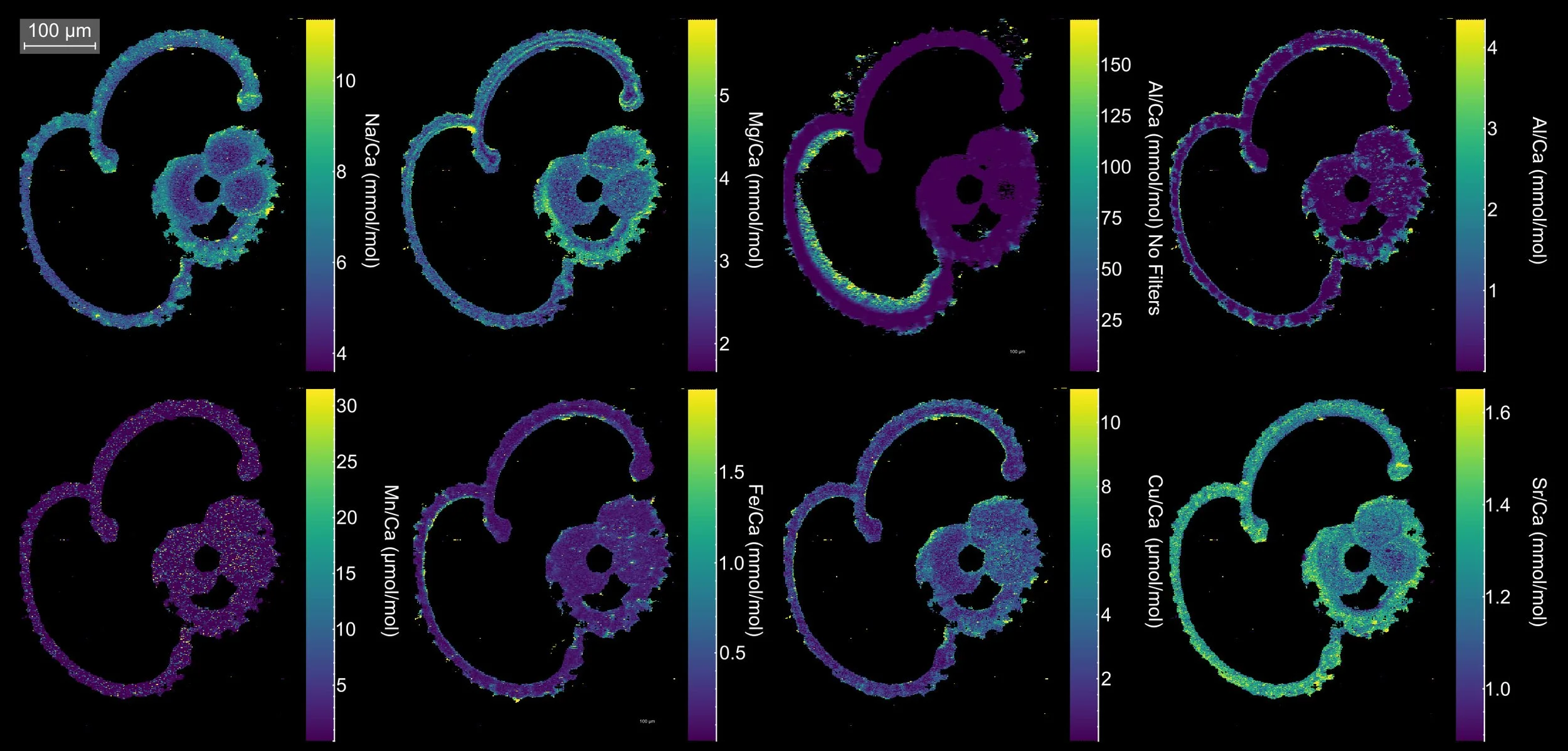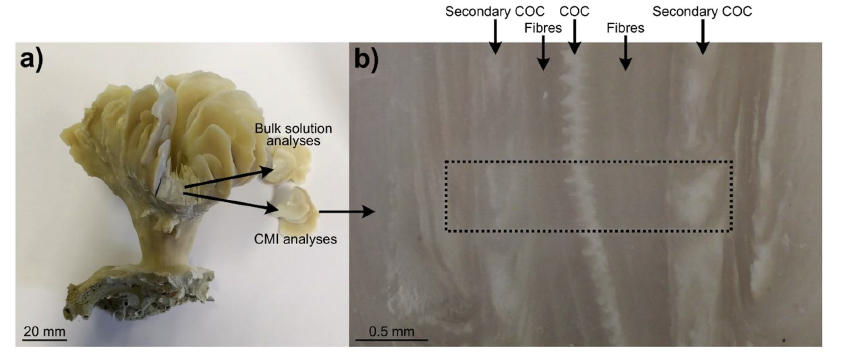Since Clarke and Wheeler (1922) first recognised that in certain groups of marine carbonates “…the proportion of magnesium carbonate is dependent upon or determined by temperature…” a large number of “proxies” have been developed.
However, a major limit on the accuracy of proxy-based climate reconstructions is the existence of “vital effects” – physiological processes that drive environmental dependence away from that predicted by thermodynamics. Despite these vital effects being known about for over 70 years (Urey, 1951), the processes responsible remain poorly constrained.
Key Questions
1. What physiological and mineralogical processes drive vital effects in corals and foraminifera? – how do they conspire to produce the spatial variability we see in chemical and isotopic composition in the skeleton?
2. Can we use vital effects to gain insights into the physiological processes causing the disequilibrium effects? If so, what can we learn about biomineralisation?
How do we do it?
Marine carbonates are inherently heterogeneous at the micron-scale, both in terms of structure and chemical/isotopic composition. This means the processes that cause vital effects are likely also spatially/temporally variable.
In the Fosterlab we use novel micro-analytical techniques such as laser ablation boron isotope analysis in a correlative imaging framework, coupled with careful experiments where organisms and inorganic CaCO3 are grown under controlled conditions (like we are carrying out in Microns2Reefs), to crack open the vital effects black box.
Recent Publications
Sykes, F. E., Meilland, J., Westgård, A., Chalk, T. B., Chierici, M., Foster, G. L., and Ezat, M. M., 2024, Large-scale culturing of the subpolar foraminifera Globigerina bulloides reveals tolerance to a large range of environmental parameters associated to different life-strategies and an extended lifespan: Journal of Plankton Research, fbae029, https://doi.org/10.1093/plankt/fbae029.
Williams, T. J., Basford, P. J., Katsamenis, O. L., Solan, M., Foster, G. L., Standish, C., Godbold, J. A., and Archambault, P., 2024, Three-dimensional reconstruction of high latitude bamboo coral via X-ray microfocus Computed Tomography: Scientific Data, v. 11, no. 1, p. 602, https://doi.org/10.1038/s41597-024-03396-9
Williams, T. J., Standish, C. D., Archambault, P., Godbold, J. A., Solan, M., Katsamenis, O. L., Basford, P. J., and Foster, G. L., 2024, Geochemical proxies for deep-sea temperature and nutrient content in cold-water bamboo corals: Chemical Geology, v. 654, p. 122053, https://doi.org/10.1016/j.chemgeo.2024.122053
Standish, C. D., Trend, J., Kleboe, J., Chalk, T. B., Mahajan, S., Milton, J. A., Page, T. M., Robinson, L. F., Stewart, J. A., and Foster, G. L., 2024, Correlative geochemical imaging of Desmophyllum dianthus reveals biomineralisation strategy as a key coral vital effect: Scientific Reports, v. 14, no. 1, p. 11121, https://doi.org/10.1038/s41598-024-61772-2, video here
Westgard, A, Ezat, M., Chalk, T.B., Chierici, M., Foster, G.L., Meilland, J. (2023) Large-scale culturing of Neogloboquadrina pachyderma, its growth in, and tolerance of, variable environmental conditions, Journal of Plankton Research, 1-14, fbad034, https://doi.org/10.1093/plankt/fbad034
Standish, C.D., Chalk, T.B., Saeed, M., Lei, F., Buckingham, M.C., D’Angelo, C.D., Wiedenmann, J., Foster, G.L., (2023) Geochemical responses of scleractinian corals to nutrient stress, Geochimica et Cosmochimica Acta, 351, 108-124, doi.org/10.1016/j.gca.2023.04.011
Kearns, L.E., Foster, G.L., Milton, J.A., Searle-Barnes, A.C., Ezard, T.H.G. (2023) The influence of geochemical variation among Globigerinoides ruber individuals on paleoceanographic reconstructions, Paleoceanography & Paleoclimatology, doi: 10.1029/2022PA004549
Buckingham, M.C., D’Angelo, C., Chalk, T.B., Foster, G.L., Johnson, K.G., Connelly, Z., Olla, C., Saeed, M., Wiedenmann, J. (2022) Impact of nitrogen (N) and phosphorus (P) enrichment and skewed N: P stoichiometry on the skeletal formation and microstructure of symbiotic reef corals, Coral Reefs, 41, 1147-1159, https://doi.org/10.1007/s00338-022-02223-0
Henehan, M.J., Klein-Gebbinck, C.D., Wymans, J.V.B., Hain, M.P., Rae, J.W.B., Honisch, B., Foster, G.L., Sang-Tae, K. (2022) No ion is an island: Multiple ions influence boron incorporation into CaCO3, Geochimica et Cosmochimica Acta, 318, 510-530, https://doi.org/10.1016/j.gca.2021.12.011





